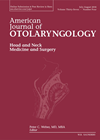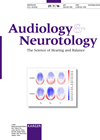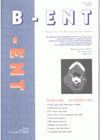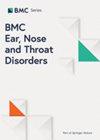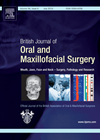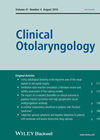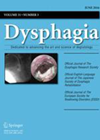
Journal Reviews archive for November 2016
Is there a ‘best’ ventilation tube?
Studies on grommet materials and sizes are not exactly new but this was a well-designed randomized study in Sweden with some useful findings. The extrusion rate and complications associated with four different ventilation tubes (grommets) were assessed prospectively in 400...
Complication rates for grommet insertion in H&N cancer patients
Otitis Media (OM) can be the direct result of H&N malignancy itself or secondary to treatment of malignancy. Both surgery and radiotherapy can cause lasting changes to the physiologic function of the ET, middle ear, tympanic membrane and ear canal....
Cochlear implant electrode insertion technique
Atraumatic cochlear implant insertion techniques (so-called ‘soft surgery’) are now standard practice in most centres for all cases (no longer just for attempted hearing preservation cases). This has led to several studies examining cochlear trauma and electrode insertion force. In...
OTO-104 in noise-induced and cisplatin-induced hearing loss
These two animal studies report on potential new applications for intra-tympanic OTO-104, a slow-release hydrogel formulation of dexamethasone that is currently being used in a Europe-wide randomised trial for Ménière’s disease. In the first paper, guinea pigs were given a...
Laser for active mucosal chronic otitis media
Active mucosal chronic otitis media (COM) is a condition characterised by otorrhoea secondary to chronic inflammation of the middle ear and mastoid mucosa associated with granulations and a tympanic membrane perforation. Surgical intervention is often required, but concurrent mastoidectomy with...
Subannular T-tubes for adhesive otitis
This Italian study looked at the success rates of a novel method to manage adhesive otitis media (chronic otitis media with adhesion of the tympanic membrane to the promontory). The authors looked at 22 patients with unilateral chronic adhesive otitis...
Role of the insula and orbitofrontal cortex in tinnitus related distress
It is estimated that 5% of the population suffer from chronic tinnitus with 17% of those suffering emotional distress. The authors attempted to study the neural correlates of tinnitus-related distress using functional magnetic resonance imaging (fMRI) during an Emotional Stroop...
A review of endoscopic sinus surgery outcomes
This review discusses the outcome measures that may be considered in the assessment of patients with chronic rhinosinusitis (CRS) as well as the outcomes of endoscopic sinus surgery (ESS) published so far. The authors also discuss the role of peri-operative...
CT chest surveillance for oral cancer patients
Computed tomography (CT) imaging of the chest is performed as part of the assessment of patients with oral cancer to exclude pulmonary metastasis or synchronous cancer. This process is integral to staging of the disease. In some cases, non-specific pulmonary...
Fingernail for orbital floor reconstruction
Orbital damage is common in maxillofacial injuries and about half of them result in damage to the orbital floor. Suitable material that could be used for repairing the orbital floor includes autografts, allografts and alloplastic materials. The disadvantage of using...
Transoral surgery for submandibular stones
The authors assessed the factors that influence the outcome of transoral excision of submandibular duct stones. This was a retrospective case-note review and prospective telephone survey of 125 patients, who had surgery over an eight-year period by a single surgeon....
Radiation-induced dysphagia in head and neck cancer
This is a helpful reference paper that provides an overview of the biomolecular effects of radiation on the tissues of the upper aero-digestive tract. The authors explain that radiation injuries occur in a repetitive and accruing manner over the duration...


